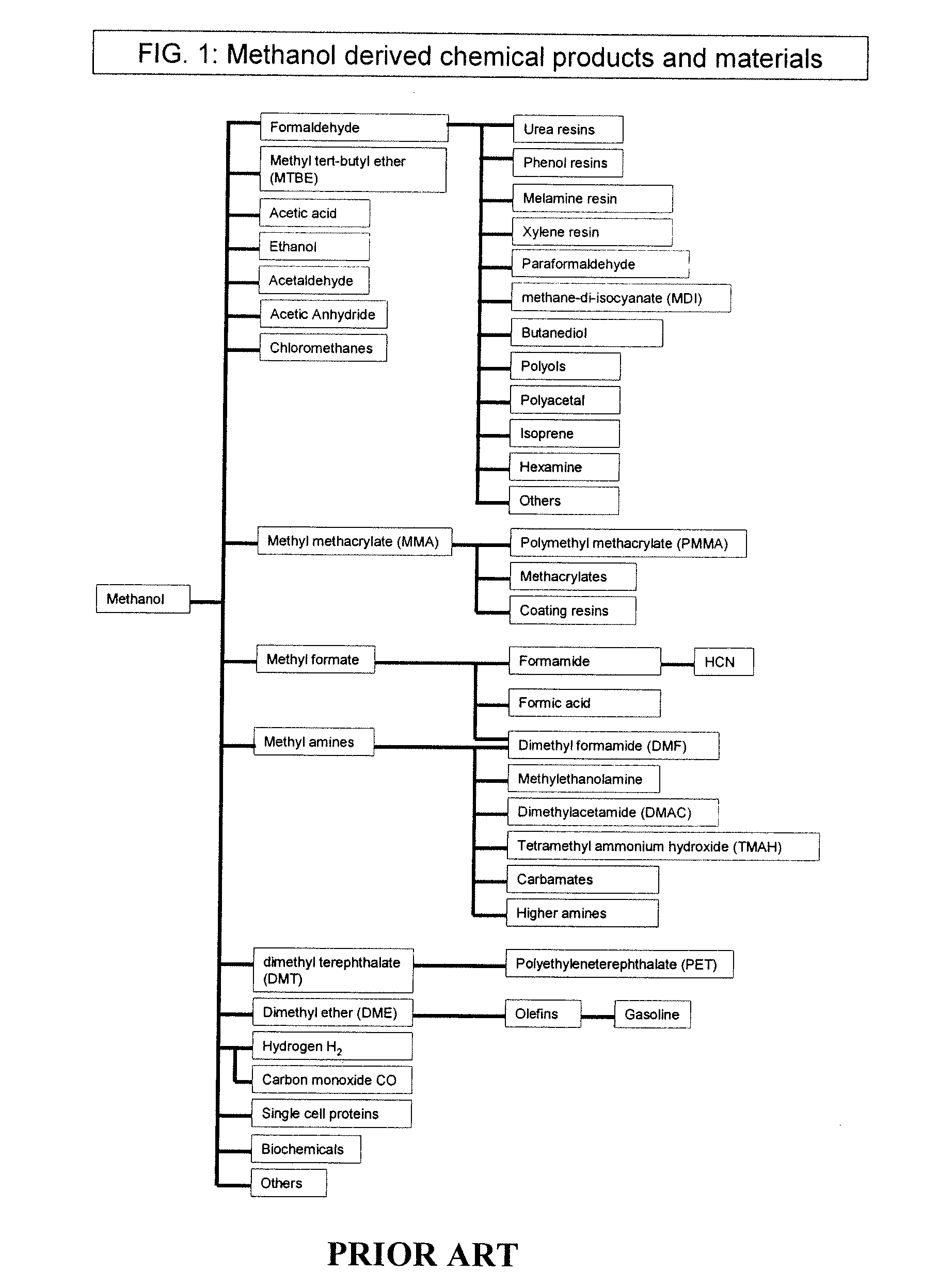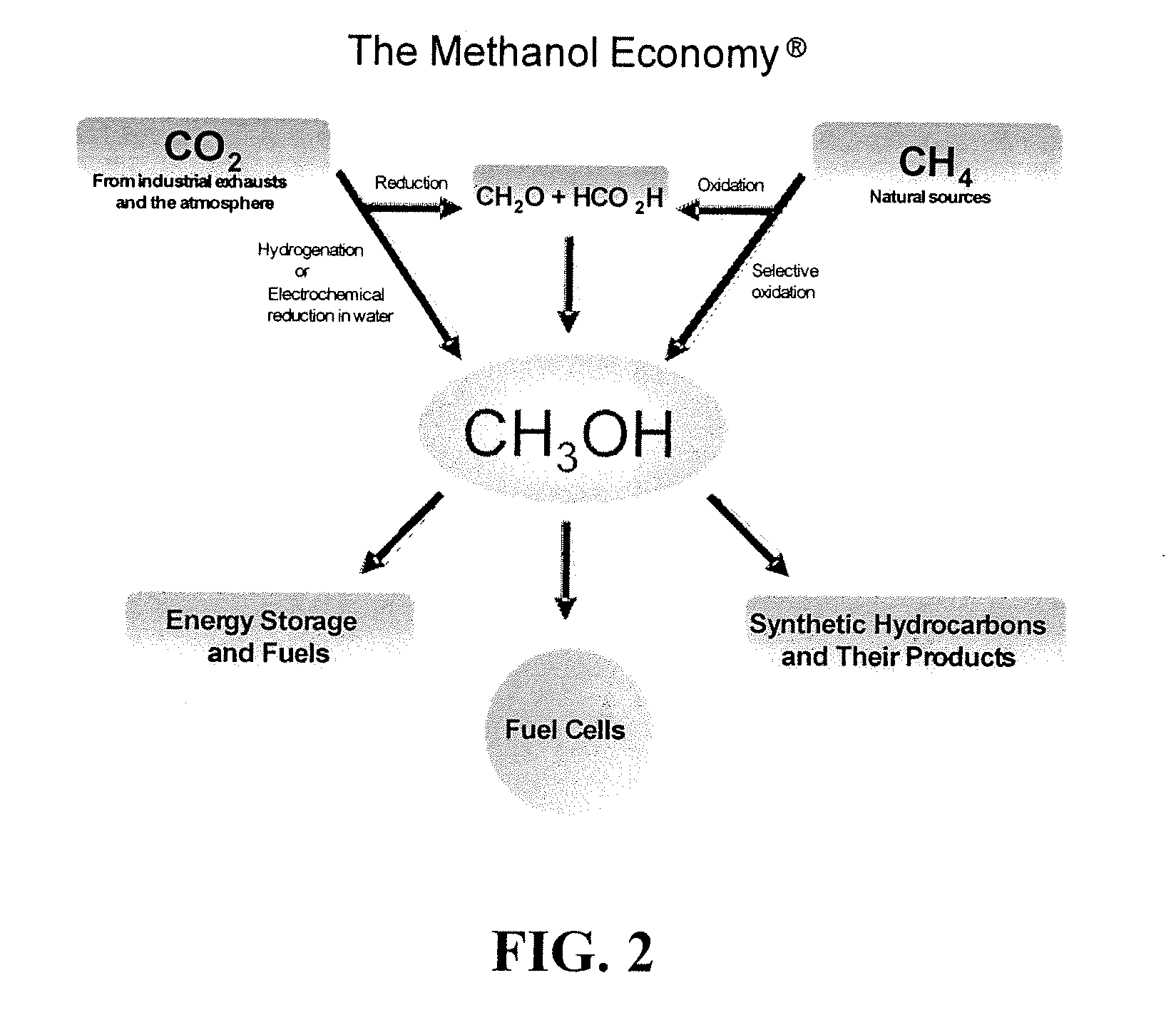Conversion of carbon dioxide to methanol and/or dimethyl ether using bi-reforming of methane or natural gas
a technology of dimethyl ether and carbon dioxide, which is applied in the preparation of ethers, ether by compound dehydration, physical/chemical process catalysts, etc., can solve the problems of high energy consumption, limited and disadvantages of fossil fuels, and high energy consumption of water, so as to reduce the disadvantages or dangers inherent in the use and transportation, the effect of convenient household gas and convenient raw materials
- Summary
- Abstract
- Description
- Claims
- Application Information
AI Technical Summary
Benefits of technology
Problems solved by technology
Method used
Image
Examples
example 1
[0078]A suitable molar mixture of CO2, methane (or natural gas) and steams is bi-reformed in a flow reactor over V2O5 / NiO catalyst support on silica at a temperature of 800-850° C. producing a gas mixture with a molecular approximate ratio of CO and 2H2 with a conversion of methane and CO2 in excess of 90%.
example 2
[0079]Support of catalyst in example 1 is fused silica having a suitably large nanostructural surface.
example 3
[0080]Recycling of water formed in the bi-reforming process of Example 1 allows continuous conversion of CO2 with methane (natural gas) exclusively to give dimethy ether.
PUM
| Property | Measurement | Unit |
|---|---|---|
| temperature | aaaaa | aaaaa |
| MON | aaaaa | aaaaa |
| RON | aaaaa | aaaaa |
Abstract
Description
Claims
Application Information
 Login to View More
Login to View More - R&D
- Intellectual Property
- Life Sciences
- Materials
- Tech Scout
- Unparalleled Data Quality
- Higher Quality Content
- 60% Fewer Hallucinations
Browse by: Latest US Patents, China's latest patents, Technical Efficacy Thesaurus, Application Domain, Technology Topic, Popular Technical Reports.
© 2025 PatSnap. All rights reserved.Legal|Privacy policy|Modern Slavery Act Transparency Statement|Sitemap|About US| Contact US: help@patsnap.com



